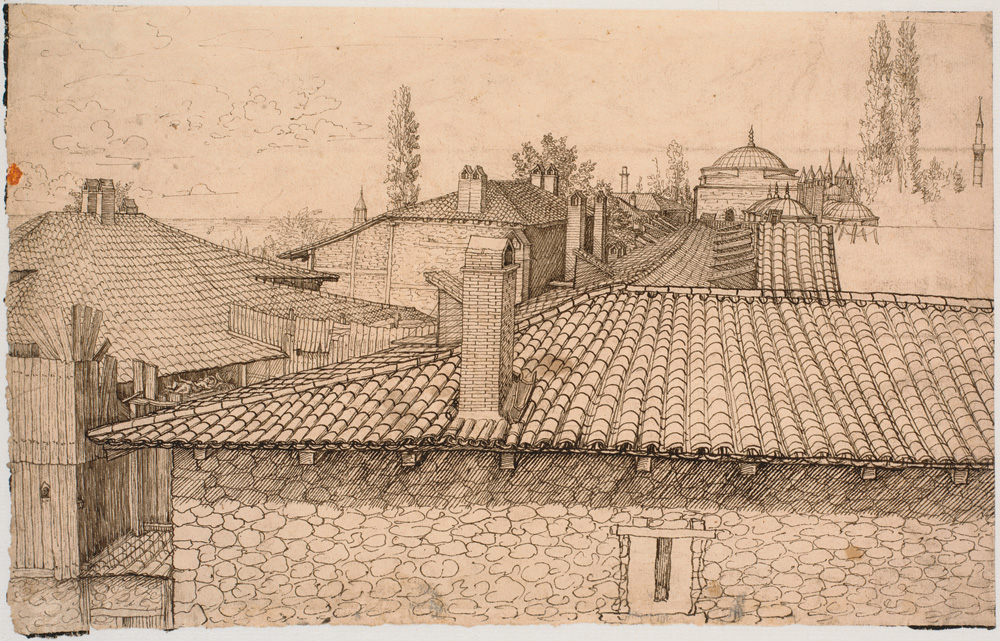Melchior Lorck, Tortoise above the Venetian Lagoon, 1555
Arriving in Constantinople, Lorck sketched the view from his window (rather like the wall in Naples painted by Thomas Jones). Marina Warner quotes Busbecq as saying that the view was blocked by bars and parapets, 'in deference to the complaints of the neighbours, who declared that they had no privacy from the gaze of the Christians. Lorck was probably trying to overcome these constraints when he looked out of the window, or perhaps his curiosity was aroused by them, because, in spite of all the attempts to prevent the gaze of Christians, he captures a tiny vignette of a couple making love on a terrace screened by rushes.' This drawing wasn't in the LRB article but is readily available on Wikimedia Commons - see below. Warner says that 'if I hadn’t gone to Copenhagen to look at Lorck’s work, I wouldn’t have noticed these figures, squirming like a sea anemone' (a simile that reminded me of Sebald's couple resembling 'some great mollusc washed ashore' in The Rings of Saturn). 'Lorck,' she says, 'doesn’t draw attention to the lovers’ presence in his roofscape, he doesn’t show or refer to erotic couplings from the Renaissance repertory. He simply sets down what he saw. His sepia ink records one tile as being as interesting as the next, in the manner of a surveyor measuring and recording. This mode was very radical for its time, and it would be hard to date the work accurately without further context. Apart from Rembrandt’s tender intimacies – and occasional frank scatology – I can’t think of another artist who makes so little fuss about looking at sex.'
Melchior Lorck, View over the rooftops of Constantinople, 1555
Source: Wikimedia Commons
Lorck stayed in Constantinople until 1559 and in that year drew a vast panorama of the city from the heights of the fortifications in Galata, overlooking the Golden Horn. 'In the foreground Lorck shows himself at work; the scroll and a chalice for his ink and paint – there are washes of green and pink on the drawing – are being held for him by a seated Ottoman grandee who is wearing the huge rolled turban that marked a mufti or emir, both important definers and upholders of the law. ... The visiting artist is able to record the city, its layout, its dwellings, its fortifications, its trade and shipping, but only because he has been given permission, and that permission was granted because the Ottoman Empire has nothing to fear from being revealed to foreigners, so confident are its citizens, the official proclaims, in what they have achieved and what they are. So The Prospect is triple-faced: an act of intelligence-gathering by a visitor from a hostile power, a reverent homage to a munificent and enthralling country, and a message to the neighbouring European empire about what it has to reckon with.'


No comments:
Post a Comment